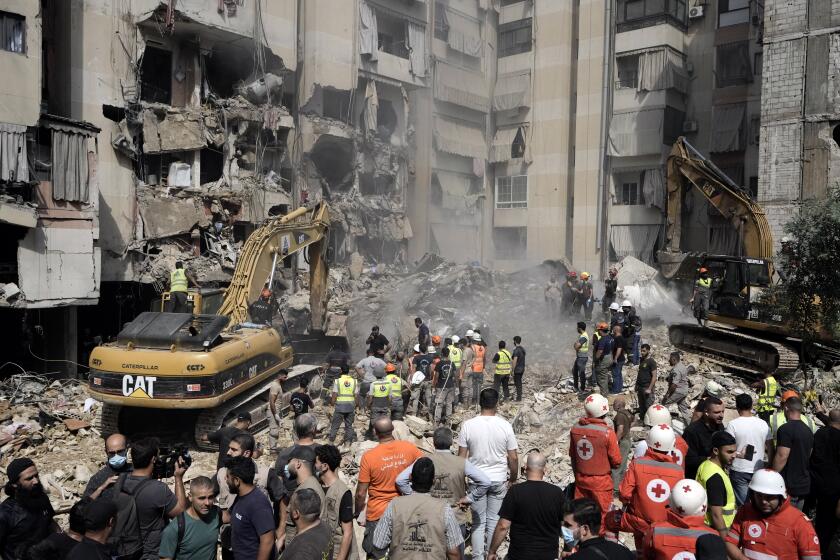When is an army broken?
Today, Carter and Bay address the overstretched services. Yesterday, the discussed whether the United States needs a larger military. Later in the week, they’ll debate mass conscription, the surge, and the leaner/meaner model of warfare.
Remember Task Force Smith
By Austin Bay
Let’s establish a personal and historical context for these “descriptors.” As a second lieutenant in the mid-1970sin the immediate aftermath of VietnamI witnessed several of my senior officers and sergeants characterize the Army as “sick.” I recall a cavalry platoon sergeant describing the deteriorated personnel and discipline situation as an illness. He was embarrassed at the institution’s decline.
I recall the mechanized brigade group I served with had a tank unit which bordered on “broken.” The “tail to tooth” program manned that particular outfit, which meant many of the unit’s soldiers weren’t originally trained as tankers but had served in support and rear echelon units. (In a sense the program was an early stab at creating a “leaner and meaner” force by cutting “support tail” in favor of “combat teeth.”) A new commander finally energized the soldiers and produced a decent unit.
Shortly before I left Germany in 1977, I attended a Fourth of July “yard party” on post. The division’s chief of staff, standing on the lawn, started chatting with his officers. We wore civvies but the conversation wasn’t civilian. Our boss made this gut point: Officers and noncoms who stayed in the service the next ten years were committed to rebuilding a debilitated institution. (The division chief of staff, Gordon Sullivan, later became a general and served as Army Chief of Staff.)
The military leaders who “stayed in” helped create the Army of Desert Storma high quality force. Ironically, as that force freed Kuwait it was already being reduced and dismantled as part of the 1990s’ planned reduction in personnel and structure. Cost-cutters identified the Cold War’s air wings and armored divisions as expensive legacies. Remember the “peace dividend?” These cuts paid it.
As Chief of Staff overseeing the cutbacks, General Sullivan feared the “Task Force Smith” phenomenon. Task Force Smith epitomizes a “broken” or “hollow” unit thrown into battle. Short on troops and weapons, T.F. Smith entered combat in Korea in July 1950. Its heroic action and sacrificethe courage and blood of brave mendelayed a tank-led North Korean assault and bought time to establish defenses further south. America, however, needed more brave men and better weapons, but we anticipated a post-World War II peace dividend and thought we could spend less on defense. By June 1950 the US Army had shrunk to 1/14th of its World War II maximum strength (from 8,268,000 to 541,000. The men of T.F. Smith paid in blood for the peace dividend. Did their sacrifice matter? The Korean War isn’t overthough I think we’re witnessing its endgamebut compare North Korea’s totalitarian starvation with South Korea’s democratic dynamism and then decide. I believe it mattered a great deal.
Transformation is a process, so America’s military is never quite in one steady state. Personnel are always being selected and trained. New equipment is being developed and deployed. Given the lead time new weapons and organizations require, an assessment of our armed forces’ condition must include an assessment of how well we plan for and fund “the mid to distant future.” In my view we are better at this than any other nation on the planet, though no one accurately predicts the future. A military-industrial-congressional complex does indeed exist and on a daily basis it sells the Pentagon needless gizmos and conceptual gee-whiz. Thus military procurement is at best “heavily challenged.”
Our armed forces need new equipment. Former Army Chief of Staff Pete Schoomaker argued that the Army began the War on Terror with a $50 billion equipment deficit. I’m not sure how he arrived at that figure; perhaps “rolled forward” procurement (i.e., delayed) prior to 9/11 is a substantial slice of it. Our Coast Guard finally received a plus up after 9/11, but its Project Deepwater has problems. The Navy faces several critical decisions regarding its Littoral Combat Ship program it wants it to be both a frigate and an in-shore fighter. The Air Force confronts the tricky “manned versus unmanned” aircraft debate. (See this StrategyPage comment on USAF conundrums.) I’ll rate our equipment status as “challenged somewhat.”
In terms of personnel, the Navy and Air Force are “basically fine” but the Marines and Army are “stretched.” Phil and I touched on why in Monday’s exchange and reached ballpark agreement on end strength. If T.F. Smith is wartime “broken,” perhaps “getting stretched” is more apt, but we must act before the fabric frays and snaps.
Austin Bay is an author and syndicated columnist. He is also a retired US Army Reserve colonel and an Iraq veteran.
Don’t wait until the break gets worse
By Phillip Carter
Austin,
Like you, I served at Fort Hood, although my tour there came a generation later, from 1999-2001. In my mind’s eye, I can see you telling me these stories over a beer at the officer’s club. “In my day, we had to hike 4 miles to the motor pool, uphill both ways, in the rain, carrying a 60-pound rucksack.” Of course, you’d add a healthy dose of exaggeration, as is the custom for all war stories.
But all kidding aside, Austin, I think you raise a valid generational comparison which provides useful context for assessing whether today’s Army is “broken” or not. After the Vietnam War, and the end of conscription, the Army broke. No one disputes this fact. The metric which matters to me is whether the Army would have been capable of fighting America’s wars if called upon. From the end of the Vietnam War until possibly the late 1980s, the answer was clearly no.
However, during the 1970s, there was no giant “CRACK!” when the Army broke apart, nor any specific moment to which officers could point to as the point of no return. By the time rampant drug use, racial problems and widespread insubordination pervaded the ranks, as cited by recently retired Army Chief of Staff Peter Schoomaker to Time magazine, the Army was long since broken.
The signs of strain on the military today read like the post-mortems on the Army after the Vietnam War: soldiers and officers leaving the service after their third or fourth combat tour; military families torn asunder by multiple deployments; repeated use of emergency personnel measures like “stop loss”; depleted equipment stockpiles; increasing resistance to recruiters from parents and school officials; and, most dangerously, severe combat-related medical and mental issues for an increasingly large share of the force.
Two of these symptoms manpower and equipment worry me most. Our best and brightest are leaving the service because they (and their families) do not want to serve a third or fourth tour in Iraq. (Another generational comparison: After their third tour, today’s soldiers have more combat time than their forefathers in World War II.) On the reserve side, the exodus has been particularly bad. An Army Reserve briefing from January 2007 reported that “if we were able to re-train every available [mid-level sergeant] in the A.R. today, we would still not be able to fill the anticipated FY06 mobilization requirement for that grade.” A companion brief reported that the Army Reserve had only 53 percent of its authorized captains.
Second, we have depleted our equipment stocks to dangerous levels in order to sustain the efforts in Iraq and Afghanistan. Units now leave a great deal of critical combat equipment in Iraq, where it is being worn out during successive rotations. They often come home to empty motor pools and armories, where they must train with antiquated equipment which is incapable of deployment.
Consequently, I believe today’s Army is broken, past tense. It cannot sustain the current wars, nor can it effectively train, equip and deploy units for future deployments. The cupboard is bare. I don’t want to wait for the signs of a broken Army which you saw in the 1970s, Austin. I want to fix the Army now, while the fractures can still heal.
Phillip Carter, an attorney with McKenna Long & Aldridge LLP in Los Angeles, is a former Army officer and an Iraq veteran.
More to Read
Sign up for Essential California
The most important California stories and recommendations in your inbox every morning.
You may occasionally receive promotional content from the Los Angeles Times.









